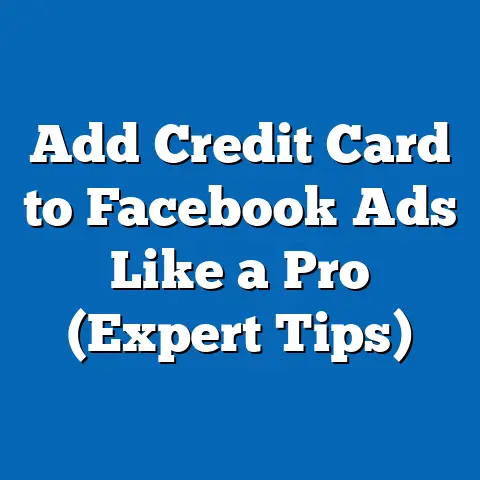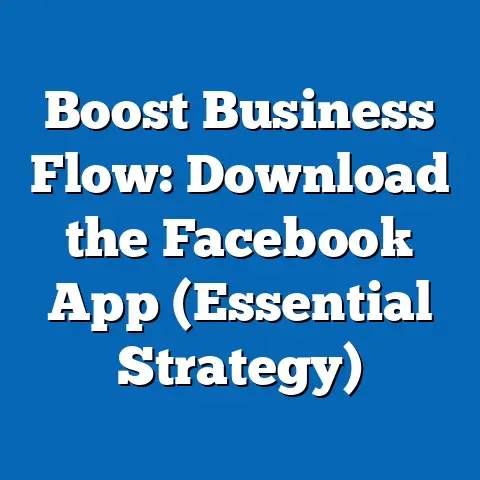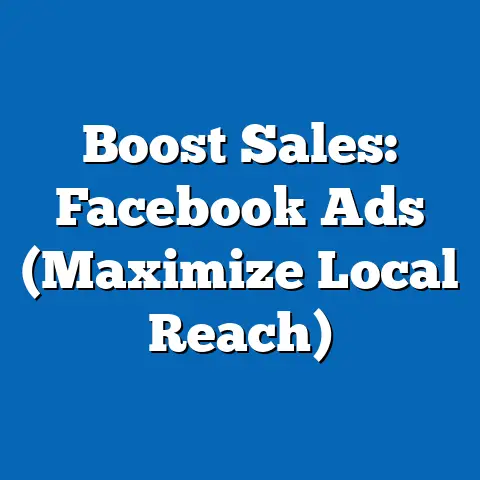Master Facebook Ads Carousel Specs (Essential Guidelines)
Hey there! Let’s talk about connection. In today’s digital world, it’s not enough to just shout your message from the rooftops. You need to connect with your audience, build a relationship, and offer something of value. And that’s where Facebook Ads, especially carousel ads, come in.
I remember when I first started using Facebook Ads. It felt like throwing spaghetti at the wall – hoping something would stick. But then I discovered the power of carousel ads. Suddenly, I could showcase multiple products, tell a compelling story, and engage my audience in a whole new way. It was like unlocking a secret level in the advertising game.
Think about it: you’re scrolling through your Facebook feed, and you see a static ad. You glance at it, maybe, but probably keep scrolling. Now imagine seeing a carousel ad with beautiful images, enticing headlines, and a clear call to action. You’re instantly more intrigued, right? That’s the power of carousel ads.
But here’s the thing: creating effective carousel ads isn’t just about slapping together some images and writing a catchy headline. You need to understand the specifications, the best practices, and the nuances of the platform. And that’s what I’m here to help you with.
In this guide, I’m going to break down everything you need to know to master Facebook Ads carousel specs. We’ll cover the technical requirements, the creative strategies, and the optimization techniques that will help you create compelling and effective carousel ads that resonate with your target market. Let’s dive in!
Understanding Carousel Ads
So, what exactly are carousel ads? Simply put, they’re an ad format on Facebook that allows you to showcase multiple images or videos within a single ad unit. Users can swipe through the cards in the carousel to see different products, features, or aspects of your brand.
Think of it like a mini-website within an ad. Instead of just one static image, you get to tell a more complete story and give users a more interactive experience. This is a huge advantage over other ad formats on Facebook.
Unique Features of Carousel Ads
Carousel ads offer a range of unique features that make them a powerful tool for marketers:
- Multiple Products: Showcase several products at once, highlighting different features or benefits of each. This is perfect for e-commerce businesses looking to drive sales.
- Storytelling: Tell a story through sequential cards, creating a narrative that engages users and draws them into your brand. This is great for building brand awareness and creating a deeper connection with your audience.
- Single Product Focus: Highlight different aspects of a single product, such as its features, benefits, and use cases. This is ideal for launching new products or showcasing the versatility of existing ones.
- Interactive Experience: Carousel ads encourage users to swipe and explore, making them more engaging than static ads. This can lead to higher click-through rates and improved brand recall.
Benefits of Using Carousel Ads
The benefits of using carousel ads are numerous:
- Increased Engagement Rates: The interactive nature of carousel ads leads to higher engagement rates compared to static ads.
- Improved Click-Through Rates: The ability to showcase multiple products or features increases the likelihood that users will click through to your website.
- Higher Conversions: By providing more information and showcasing multiple products, carousel ads can lead to higher conversion rates.
- Cost-Effective: Carousel ads can be more cost-effective than other ad formats because they allow you to achieve more with a single ad unit.
- Versatile: Carousel ads can be used for a variety of marketing goals, including driving sales, building brand awareness, and generating leads.
Takeaway: Carousel ads are a versatile and engaging ad format that can help you achieve a variety of marketing goals. By understanding their unique features and benefits, you can start leveraging them to improve your Facebook advertising performance.
Ideal Specifications for Carousel Ads
Now that you understand what carousel ads are and why they’re so effective, let’s dive into the technical details. Getting the specifications right is crucial for ensuring your ads look their best and perform optimally.
Here’s a detailed breakdown of the specifications you need to know:
Image Specifications
- Recommended Size: 1080 x 1080 pixels. This is the ideal size for carousel ads, as it ensures your images are sharp and clear on all devices.
- Aspect Ratio: 1:1 (square). While you can use other aspect ratios, square images generally perform best in carousel ads.
- Minimum Resolution: 600 x 600 pixels. While you can use lower resolutions, I strongly recommend sticking to 1080 x 1080 pixels for the best results.
- File Types: JPG or PNG. These are the most common and widely supported image file types.
- Maximum File Size: 30MB. Keep your file sizes as small as possible to ensure your ads load quickly.
Video Specifications
If you’re using videos in your carousel ads, here are the specifications you need to keep in mind:
- Recommended Resolution: 1080 x 1080 pixels. Just like with images, this is the ideal resolution for video carousel ads.
- Aspect Ratio: 1:1 (square). Again, square videos generally perform best in carousel ads.
- Minimum Resolution: 600 x 600 pixels.
- Video Duration: Up to 240 minutes. However, I recommend keeping your videos short and engaging, ideally under 15 seconds.
- File Types: MP4 or MOV. These are the most common and widely supported video file types.
- Maximum File Size: 4GB. Keep your file sizes as small as possible to ensure your ads load quickly.
Text Limitations
- Headline: 25 characters. This is the main text that appears below each card in the carousel. Keep it short, catchy, and relevant to the image or video.
- Description: 25 characters. This is additional text that appears below the headline. Use it to provide more context or highlight a key benefit.
- Link Text: Varies depending on the call to action button. This is the text that appears on the button that users click to visit your website. Choose a call to action that is relevant to your offer, such as “Shop Now,” “Learn More,” or “Sign Up.”
Technical Requirements
- Number of Cards: You can include up to 10 cards in a carousel ad. However, I recommend using 3-5 cards for optimal engagement.
- Link URL: Each card in the carousel can have its own unique link URL. This allows you to direct users to specific product pages or landing pages.
- Call to Action Button: Each card in the carousel can have its own call to action button. Choose a call to action that is relevant to the image or video and the link URL.
Takeaway: Adhering to these specifications is essential for creating high-quality carousel ads that perform well on Facebook. Make sure to double-check your images, videos, and text to ensure they meet the requirements before launching your campaign.
Creating Eye-Catching Carousel Ads
Now that we’ve covered the technical specifications, let’s talk about the creative aspects of carousel ads. After all, even the most technically perfect ad will fail if it doesn’t capture attention and engage users.
Visual Consistency and Branding
One of the most important things to keep in mind when creating carousel ads is visual consistency. Your ads should have a cohesive look and feel that aligns with your brand. This means using consistent colors, fonts, and imagery across all of your cards.
Think of your carousel ad as a mini-billboard for your brand. You want users to instantly recognize your brand and associate it with the quality and value you offer.
Selecting High-Quality Images and Videos
The images and videos you use in your carousel ads are crucial for capturing attention and driving engagement. Choose visuals that are high-quality, relevant to your target audience, and visually appealing.
Here are a few tips for selecting the right visuals:
- Use professional-quality images and videos. Avoid blurry or pixelated images.
- Choose images and videos that are relevant to your target audience. Consider their interests, demographics, and pain points.
- Use visuals that are visually appealing and eye-catching. Experiment with different colors, compositions, and styles.
- Showcase your products in the best possible light. Highlight their features, benefits, and use cases.
- Use lifestyle images and videos to show your products in context. This helps users visualize themselves using your products.
Crafting Compelling Headlines and Descriptions
Your headlines and descriptions are your opportunity to tell a story and highlight the key benefits of your products or services. Keep them short, catchy, and relevant to the image or video.
Here are a few tips for crafting compelling headlines and descriptions:
- Use strong verbs and action words.
- Highlight the key benefits of your products or services.
- Use numbers and statistics to add credibility.
- Ask questions to engage users.
- Create a sense of urgency or scarcity.
- Use emojis to add personality and visual appeal.
Storytelling Through Carousel Ads
One of the most effective ways to use carousel ads is to tell a story. This can be a sequential narrative that unfolds across multiple cards, or a thematic grouping of products that showcases the versatility of your brand.
Here are a few examples of how you can use carousel ads for storytelling:
- Tell the story of your brand. Share your mission, values, and history.
- Showcase the journey of a customer. Highlight their pain points, how your products or services helped them, and the results they achieved.
- Create a step-by-step guide. Show users how to use your products or services to achieve a specific goal.
- Highlight different use cases for your products or services. Show users how they can use your products in different situations.
Takeaway: By focusing on visual consistency, selecting high-quality images and videos, crafting compelling headlines and descriptions, and telling a story, you can create carousel ads that capture attention, engage users, and drive results.
Best Practices for Carousel Ads
Now that you know the technical specifications and creative strategies for carousel ads, let’s talk about some best practices that will help you maximize your results.
The Importance of the First Card
The first card in your carousel ad is like the cover of a book. It’s the first thing users see, and it’s what will determine whether they swipe through the rest of the cards.
Make sure your first card is visually appealing, relevant to your target audience, and clearly communicates the value proposition of your ad.
Utilizing the Last Card Effectively
The last card in your carousel ad is your opportunity to close the deal. Use it to drive users to take action, such as visiting your website, making a purchase, or signing up for your email list.
Here are a few ways to utilize the last card effectively:
- Include a clear call to action. Tell users exactly what you want them to do.
- Offer a special promotion or discount. This can incentivize users to take action.
- Provide a summary of the key benefits of your products or services.
- Include a testimonial or social proof. This can build trust and credibility.
A/B Testing Carousel Structures and Content
A/B testing is the process of testing different versions of your ads to see which ones perform best. This is an essential part of optimizing your carousel ads for maximum results.
Here are a few things you can A/B test:
- The order of your cards.
- The images and videos you use.
- The headlines and descriptions you write.
- The call to action buttons you use.
- The targeting options you use.
Optimizing for Mobile Users
With the majority of Facebook users accessing the platform on mobile devices, it’s crucial to optimize your carousel ads for mobile viewing. This means using images and videos that are optimized for smaller screens, writing short and concise text, and using call to action buttons that are easy to tap.
Takeaway: By following these best practices, you can create carousel ads that are visually appealing, engaging, and optimized for maximum results.
Analyzing Carousel Ad Performance
Creating great carousel ads is only half the battle. You also need to track their performance and make adjustments as needed to optimize your results.
Key Metrics to Track
Here are some key metrics you should be tracking for your carousel ads:
- Click-Through Rate (CTR): This is the percentage of users who click on your ad after seeing it. A high CTR indicates that your ad is relevant and engaging to your target audience.
- Engagement Rate: This measures the level of interaction users have with your ad, such as likes, comments, and shares. A high engagement rate indicates that your ad is resonating with your target audience.
- Conversion Rate: This is the percentage of users who take a desired action after clicking on your ad, such as making a purchase, signing up for your email list, or filling out a form. A high conversion rate indicates that your ad is effective at driving results.
- Cost Per Click (CPC): This is the average cost you pay each time someone clicks on your ad. A low CPC indicates that your ad is cost-effective.
- Cost Per Conversion (CPC): This is the average cost you pay each time someone takes a desired action after clicking on your ad. A low CPA indicates that your ad is efficient at driving results.
Using Facebook Ads Manager to Analyze Performance
Facebook Ads Manager provides a wealth of data and insights that you can use to analyze the performance of your carousel ads. You can track the metrics listed above, as well as a variety of other metrics, such as impressions, reach, and frequency.
To analyze your carousel ad performance in Facebook Ads Manager, follow these steps:
- Go to Facebook Ads Manager.
- Select the campaign, ad set, or ad you want to analyze.
- Click on the “Columns” dropdown and select “Customize Columns.”
- Choose the metrics you want to track and click “Apply.”
- Analyze the data and make adjustments as needed to optimize your results.
Interpreting the Data and Making Informed Decisions
Analyzing your carousel ad performance is only useful if you know how to interpret the data and make informed decisions based on it.
Here are a few tips for interpreting your data:
- Look for trends and patterns. Are certain cards performing better than others? Are certain targeting options more effective?
- Compare your results to your goals. Are you achieving your desired CTR, engagement rate, and conversion rate?
- Benchmark your results against industry averages. How do your results compare to other advertisers in your industry?
- Use the data to make adjustments to your ads. A/B test different versions of your ads to see which ones perform best.
- Don’t be afraid to experiment. Try new things and see what works.
Takeaway: By tracking your carousel ad performance, analyzing the data, and making informed decisions, you can continuously optimize your ads for maximum results.
Conclusion
Mastering Facebook Ads carousel specs is essential for creating compelling and effective ads that resonate with your target market. By understanding the technical requirements, creative strategies, and best practices outlined in this guide, you can significantly enhance your advertising strategies and achieve your marketing goals.
Remember, Facebook advertising is an ongoing process of testing, learning, and optimizing. Don’t be afraid to experiment with different approaches and track your results to see what works best for your business.
I hope this guide has empowered you with the knowledge and confidence to create amazing carousel ads that drive results. Now go out there and start connecting with your audience!






